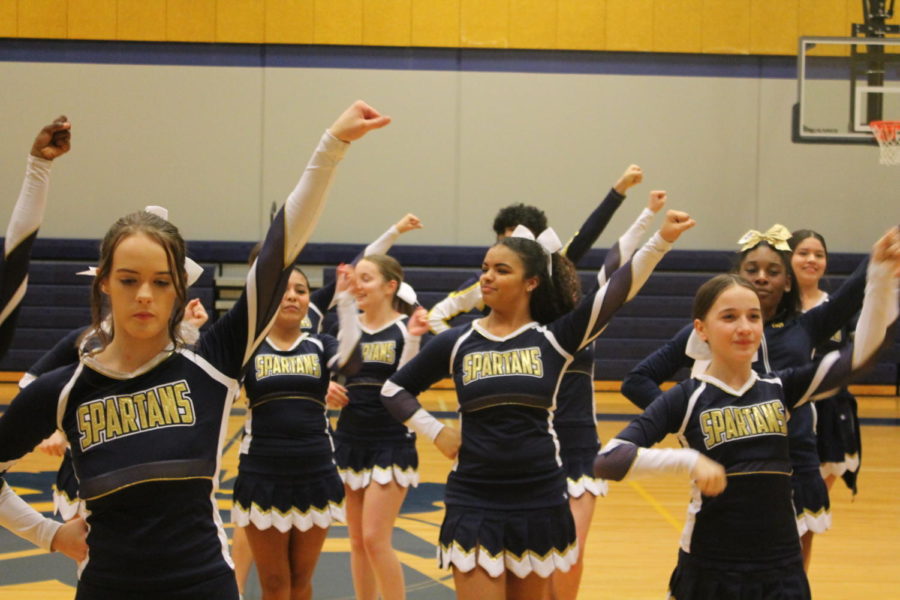Battle Cheer Squad
A look into what high school cheerleaders face
Battle cheer squad cheering at boys basketball game
With smiles on their faces they jump, fly, and tumble to entertain the masses attending Battle sporting events. However, behind the bows and pom poms, cheerleading can be a dangerous sport, with many ups and downs for it’s athletes.
A report from the National Center for Catastrophic Sports Injury Research at the University of North Carolina shows that cheerleading is responsible for a whopping 65.2 percent of all catastrophic injuries in youth sports. That’s more than sports like basketball, soccer, and even football. Many states, including MSHAA, don’t recognize cheerleading as a sport, rather a “sport activity”. This can impact the conditions in which cheerleaders practice, shortchanging safety protocols by allowing them to practice in hallways or cafeterias. “High school cheerleaders will experience an average of 3.8 injuries throughout their career,” reports the National Library of Medicine.
While cheer may be fun, cheerleaders often run a high risk for concussions. It might surprise you to find out that the athletes who suffer the most from concussions aren’t the flyers, but the bases. When throwing people up in the air or supporting them in a stunt, bases can have flyers fall on top of them, chancing a hit to the head. People with multiple concussions often experience a longer recovery process, and can face long-term problems regarding memory, concentration, headaches, and even balance.
Though a physically grueling sport, Battle athletes seem to appreciate the social aspect the most. “I’ve made an insane amount of bonds through cheer,” said sophomore, Aaliyah Beck. “It makes me a tad more busy, but it’s really fun getting to interact with more people who share something in common with me.” She went on to say, “I’ve made genuine connections with more people. I feel like it’s a healthy outlet for my life because it’s something I really enjoy doing.”
On top of social interaction, cheerleading comes with many physical benefits. Cheer requires athletes to be team players and puts a focus on leadership skills. As they work together to complete stunts and stay in unison during cheers or tumbling sequences. Cheerleading also helps with flexibility, coordination, endurance, and strength training. Like any workout, it provides a rush of endorphins to keep athletes in a positive mood.
All in all, cheerleading is a sport beloved by Battle students. While it may look fun, a lot of effort goes into the work that Battle’s cheerleaders do. So don’t forget to cheer for our cheerleaders!

